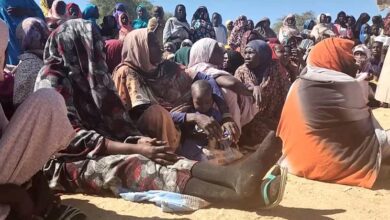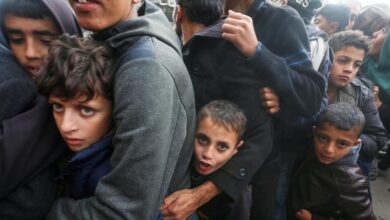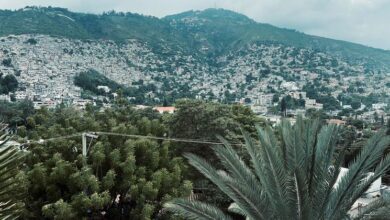Deaths from methanol poisoning highlight the problem of counterfeit alcohol in Southeast Asia
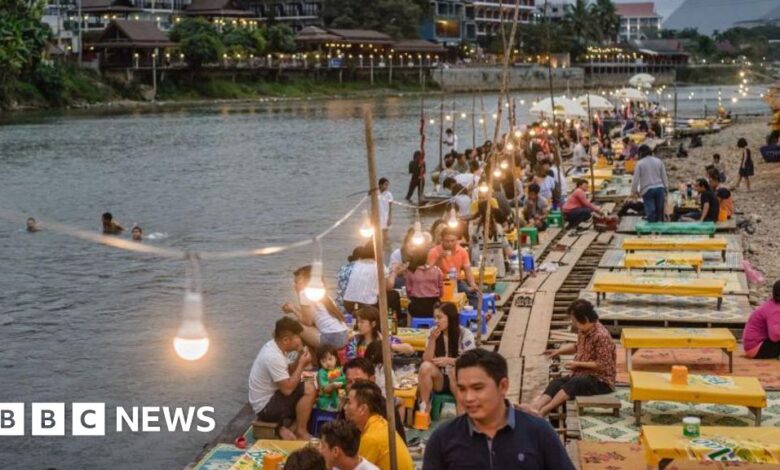
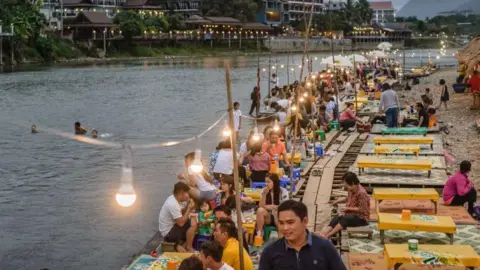 Getty Images
Getty ImagesSuspected methanol poisoning from tainted drinks is believed to have killed six tourists in a Laos resort town in the past two weeks.
A British woman, two Australian women, an American man and two Danish citizens were killed. The deaths are still being investigated by police, but reports suggest they may have consumed drinks containing methanol, a deadly substance often found in bootleg alcohol.
Methanol poisoning has long been a well-known problem across Southeast Asia, especially in poor countries along the Mekong River.
But despite foreign governments posting warnings about alcohol consumption in these places, there is still little awareness of backpacker parties.
Odorless and colorless, methanol is difficult to detect in drinks and victims often do not immediately notice symptoms of poisoning.
And in countries like Laos – one of the poorest and least developed countries in Asia – the problem arises from alcohol suppliers taking advantage of an environment with low levels of law enforcement and virtually no regulation in the food industry and hotels.
What is methanol poisoning?
Methane is a toxic alcohol used in industrial and household products such as paint thinner, antifreeze, varnish, and photocopier fluid.
It is colorless and has an odor similar to ethyl alcohol – the chemical found in alcoholic beverages.
But methanol is very dangerous for humans and drinking just 25ml or half a glass can be fatal.
It can take up to 24 hours for the victim to begin showing signs of illness, including: nausea, vomiting and abdominal pain, which can progress to hypoventilation and difficulty breathing.
If left untreated, mortality is typically reported to be between 20% and 40%, depending on methanol concentration and amount used. International medical organization Medicins Sans Frontiers said (MSF) tracks the number of global outbreaks.
But if poisoning is diagnosed quickly enough, ideally within the first 30 hours, treatment can reduce some of the worse effects.
How common is this problem in Southeast Asia?
Asia is home to the highest rate of methanol poisoning in the worldaccording to MSF database.
It mainly affects poorer countries – outbreaks often occur in Indonesia, India, Cambodia, Vietnam and the Philippines.
According to MSF, Indonesia is considered a hotspot – the country has reported the highest number of incidents in the past two decades.largely due to the widespread production and consumption of illegal alcohol.
Towns like Vang Vieng in Laos, where a deadly poisoning incident occurred, are known as stops on this route. backpacking route through Southeast Asia. The town’s economy is built on tourism, with streets lined with bars, restaurants and hostels catering to visitors.
But in Laos, law enforcement has limited resources and there are few regulations on food and alcohol standards. There is also an industry in the production of home-brewed alcohol, which can lead to accidental poisoning.
Manufacturers also produce counterfeit drinks using methanol instead of ethanol because it is cheaper, local observers said.
A Western diplomat in the region told the BBC: “You ask unscrupulous manufacturers to add methanol to their drinks because it’s cheaper – it’s used to make drinks appear stronger or make Lower quality alcoholic drinks appear to be stronger.”
They said cases of methanol poisoning are regularly reported to consulates in the area.
However, a lack of data means it is difficult to quantify the scale of contamination and where tainted drinks enter the supply chain.
“I don’t think nefarious bar owners are trying to poison tourists – that’s not good for them or their industry either,” the diplomat said.
“It has more to do with the production side – there is low education, lax regulation, people cutting corners.”
What can be done about it?
Some campaigners have sought to draw attention to the former dangers. Australian man Colin Ahearn runs a Facebook page called ‘Don’t drink strong alcohol in Bali‘ where he warns against mixed drinks such as cocktails or drinks made from opened bottles of spirits.
He told Australian media earlier this week that his site typically receives posts every week about methanol poisoning across Southeast Asia.
The diplomat said the risks of smuggled alcohol were well known to tourism operators and embassies, but a high-level campaign was needed to inform tourists.
They added: “This terrible event may help educate people but does not address the cause of the problem.”
Several Western governments updated their advice on the dangers of alcohol in Southeast Asia on their consulates and travel pages this week.
They advise that contaminated drinks can include local home-brewed spirits, alcoholic drinks such as cocktails and even branded alcohol.


